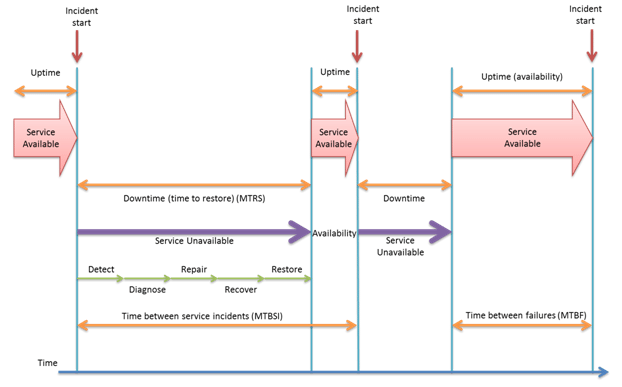 Branimir Valentic
Branimir Valentic
August 21, 2013
By providing IT services, a service provider creates value that a customer receives. To avoid a gap between (customer) expectations and reality (of how services are provided), the value created should be measured. There are several ways, i.e. parameters, of how this can be done. Availability of the service is just one of them.
It’s simple – we agree with the customer as to a certain service level, which includes targeted availability, and then we measure (availability) achievement. Easy to say, but how does it work in practice?
It is important to say – availability of services significantly shapes customer satisfaction (or dissatisfaction). I assume that I don’t have to explain the negative effects of unavailable service. Therefore, both service providers and customers need plain numbers that will provide information about service availability. In addition to service availability, some components (or Configuration Items – CIs) that form the service will be measured, and their availability parameters analyzed and reported. All this implies that availability must be managed.
Availability management is about monitoring, measuring, analyzing and reporting of the following aspects:


My experience is that Service Level Agreements (SLAs) usually define only availability requirements, and rarely reliability and maintainability.
So, service incidents happen. Is that the end? It shouldn’t be. One of the principles of Availability management is that customer satisfaction can still be achieved, even if incidents occur. How? By assisting Incident Management to ensure that incidents are resolved as quickly as possible and that the impact of incidents is minimized.

The above figure shows incident lifecycle, as seen from an availability point of view. Each stage can be measured to provide valuable information in incident management analysis. Based on this data, weak points, i.e. possibilities for improvement, can be pointed out. Here are more details about particular stages of the lifecycle, as well as few examples of how partial measurements during downtime detect weak points:
When such measurements are analyzed, they could result in detection of lost time, e.g. incident restore took 2 hours, but applying a resolution took only 15 minutes. Analysis of other measurements, like detection and diagnosis time, will answer the question.
I have seen some examples of availability reports that concluded in event monitoring tool replacement (an event is one of the triggers of incidents) due to the fact that the detection phase took too long.
In case this has not been stated clearly enough, availability management supports and forms an integral part of many other processes in ITIL. That increases the importance of measurements on which availability management relies heavily. It is true that “if you don’t measure it – you can’t improve it,” but more interestingly, “if you don’t measure it – you probably don’t care,” which is dangerous from a revenue point of view.
Download a free sample of our Availability Management process template to learn more about the process.